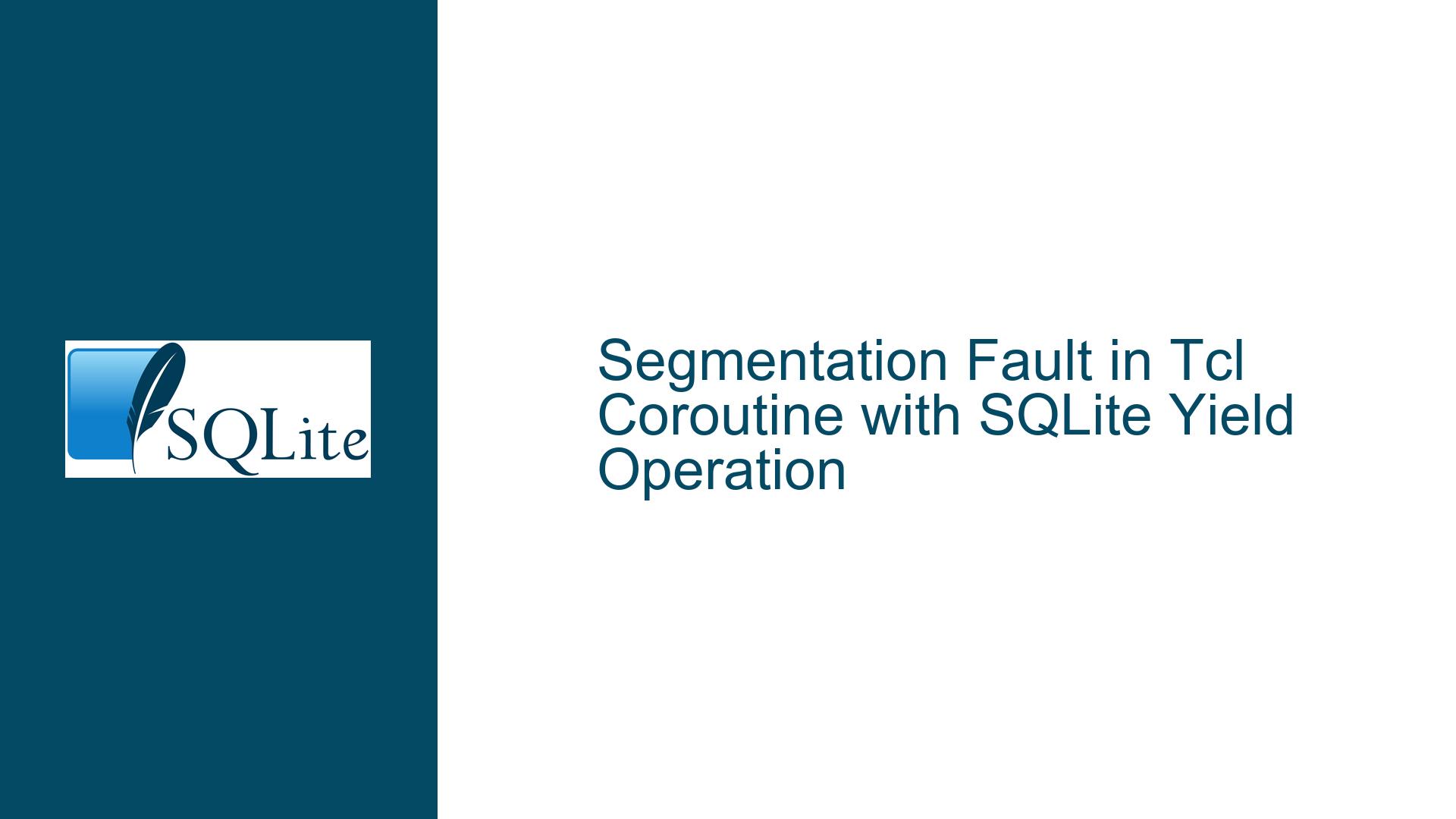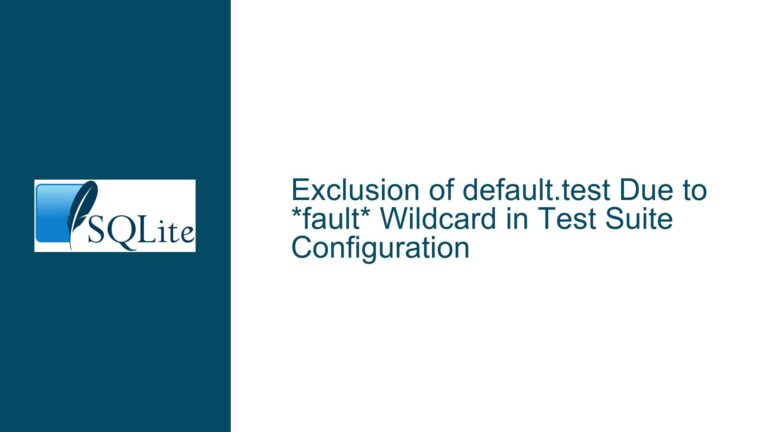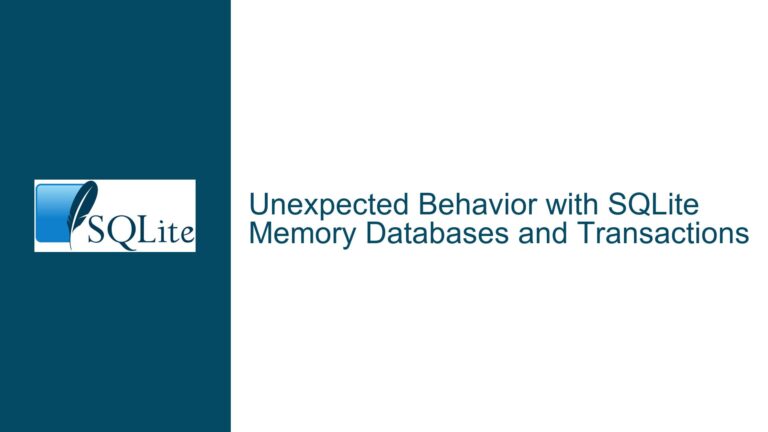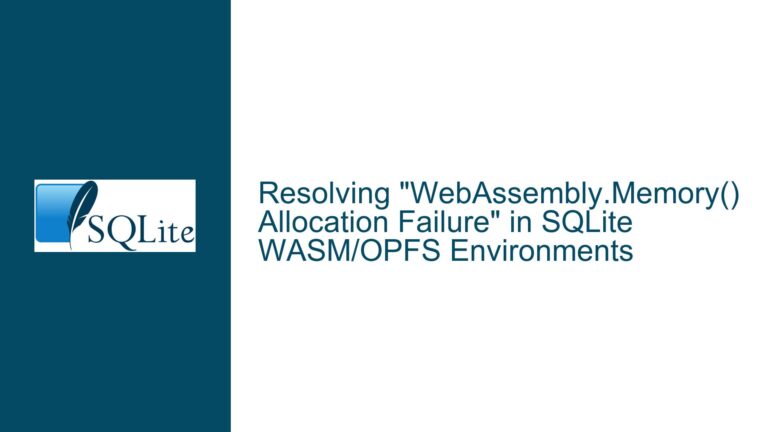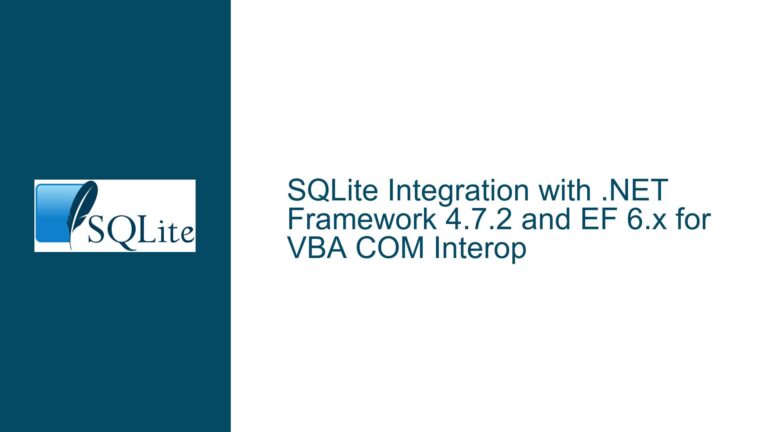Segmentation Fault in Tcl Coroutine with SQLite Yield Operation
SQLite Database Corruption Due to Coroutine Yield in Tcl Script
The issue at hand involves a segmentation fault occurring in a Tcl script that utilizes SQLite through the Tcl binding. The script creates a coroutine that executes a SQLite query and yields within the query’s evaluation loop. The segmentation fault manifests when the database handle is deleted while the coroutine is still active, leading to an attempt to access a freed SQLiteDb structure. This issue is particularly relevant when dealing with SQLite in a non-recursive engine (NRE) context, which is supported in Tcl 8.6 and later versions.
The segmentation fault is triggered by the sequence of operations: the creation of a coroutine that performs a SQLite query, yielding within the query loop, and then deleting the database handle while the coroutine is still active. The fault occurs because the SQLiteDb structure is released when the database handle is deleted, but the coroutine still holds a reference to this structure, leading to an invalid memory access when the coroutine resumes and attempts to access the now-freed structure.
This issue is compounded by the fact that the Tcl binding for SQLite has undergone changes to support NRE, which allows for more efficient handling of coroutines and other asynchronous operations. However, these changes can introduce subtle bugs if not properly managed, especially when dealing with database operations that span multiple coroutine yields.
Interrupted Write Operations Leading to Index Corruption
The primary cause of the segmentation fault is the improper handling of the SQLiteDb structure when a coroutine yields during a database operation. When a coroutine yields, the state of the database operation is suspended, but the underlying SQLiteDb structure is not properly preserved. This leads to a situation where the database handle can be deleted while the coroutine is still holding a reference to the SQLiteDb structure, resulting in an invalid memory access when the coroutine resumes.
Another contributing factor is the version of SQLite and the Tcl binding being used. Older versions of the Tcl binding, particularly those compiled against Tcl 8.5, do not support NRE and will error out with a "C stack busy" message when a yield is attempted within a SQLite query. However, even with NRE support, there can be issues if the SQLiteDb structure is not properly managed during coroutine yields.
The issue is further complicated by the fact that the segmentation fault can also occur when deleting a coroutine that is in the middle of a SQLite transaction. This suggests that the problem is not isolated to a single use case but is a more general issue with the interaction between SQLite and Tcl coroutines.
Implementing PRAGMA journal_mode and Database Backup
To address the segmentation fault issue, several steps can be taken to ensure that the SQLiteDb structure is properly managed during coroutine yields and database handle deletions. One approach is to implement the PRAGMA journal_mode to ensure that the database is in a consistent state even if a coroutine yields during a write operation. The WAL (Write-Ahead Logging) mode, for example, can help mitigate some of the issues by allowing reads to proceed concurrently with writes, reducing the likelihood of corruption.
Another important step is to ensure that the database handle is not deleted while any coroutines are still active and holding references to the SQLiteDb structure. This can be achieved by maintaining a reference count for the database handle and only deleting it when the reference count reaches zero. This approach requires careful management of the database handle and coroutine lifecycle, but it can prevent the segmentation fault from occurring.
Additionally, it is crucial to use the correct versions of SQLite and the Tcl binding. Versions of SQLite that support NRE and are compiled against Tcl 8.6 or later are more likely to handle coroutine yields correctly. Upgrading to the latest version of SQLite and ensuring that the Tcl binding is properly configured for NRE support can help avoid the segmentation fault issue.
In cases where the segmentation fault has already occurred and the database is corrupted, it may be necessary to restore from a backup. Regular database backups should be part of any robust database management strategy, especially when dealing with complex operations like coroutine yields and transactions. The backup process should be automated and tested regularly to ensure that it can be relied upon in the event of a failure.
Finally, it is important to thoroughly test any changes to the database schema or the Tcl script to ensure that they do not introduce new issues. This includes testing with different versions of SQLite and the Tcl binding, as well as testing under various load conditions to ensure that the database remains stable and consistent.
In summary, the segmentation fault issue in Tcl coroutines with SQLite yield operations can be addressed by implementing proper database handle management, using the correct versions of SQLite and the Tcl binding, and ensuring regular database backups. By taking these steps, the risk of database corruption and segmentation faults can be significantly reduced, leading to a more stable and reliable database environment.
